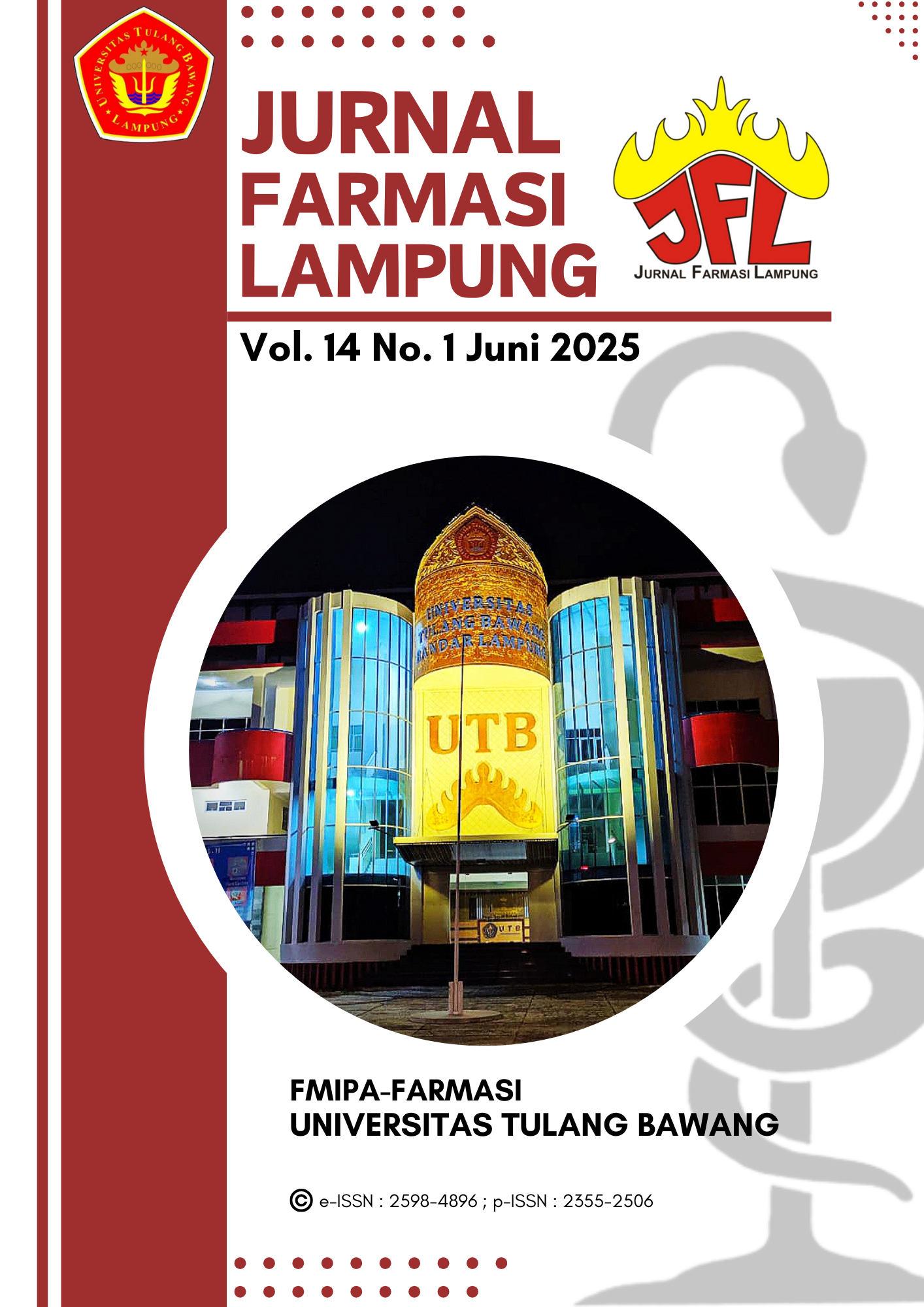PENGEMBANGAN APLIKASI BERBASIS WEB TERAPI UNTUK PENYEDIAAN INFORMASI PELAYANAN OBAT DI KOTA PALU
TERAPI WEB-BASED APPLICATION DEVELOPMENT FOR DRUG SERVICES INFORMATION PROVISION IN PALU CITY
DOI:
https://doi.org/10.37090/jfl.v14i1.2064Abstract
Advancements in technology have been widely adopted across industries, including pharmaceutical services. Numerous online pharmacies have emerged, offering convenience to consumers but unfortunately, to some extent, diminished the role of pharmacists. This study aims to develop a web-based application called TERAPI, an online pharmacy that does not reduce the role of pharmacists. The work includes designing the operational configuration, and the user interface. The development utilizes technologies like Google Sites, third-party applications, embedded code, and artificial intelligence. The process includes programming validation, menu layouting, and database creation.TERAPI provides six features: Drug, Pharmacy, Consultation, Hospital, ICU, and Order. There are six different test cases (TC): TC A01 verifies dashboard accessibility, TC B01 and B02 indicate that users with valid credentials can create an account (Sign Up), and get into the application (Log In). TC C01, C02, and C03 verify the accessibility of menus Drug, Pharmacy, and Consultation. This application follows the standards and regulations of online drug distribution and does not provide prescription and psychotropic drugs due to safety reasons.
Keywords: Application, drugs, pharmacy, service, web
Downloads
References
[1] R. Pandita, “Internet a change agent: An overview of internet penetration and growth across the world,” International Journal of Information Dissemination and Technology, vol. 7, no. 2, 2017, doi: 10.5958/2249-5576.2017.00001.2.
[2] Muhammad Fitri Rahmadana, Ekonomi Digital. NILACAKRA, 2021.
[3] M. Gaedke and G. Gräf, “Development and Evolution of Web-Applications Using the WebComposition Process Model,” 2001. doi: 10.1007/3-540-45144-7_8.
[4] I. C. Drivas, D. P. Sakas, and P. Reklitis, “Improving Website Usability and Traffic Based on Users Perceptions and Suggestions––A User-Centered Digital Marketing Approach,” in Springer Proceedings in Business and Economics, 2019. doi: 10.1007/978-3-030-16099-9_30.
[5] Pengurus Pusat GP Farmasi Indonesia, KODE ETIK USAHA FARMASI INDONESIA. Indonesia, 2016.
[6] A. R. Manalang, A. R. Berto, and A. W. Utoyo, “Analisis Isi Pelanggaran Etika Artikel Produk Kesehatan di Apotek Online Medicastore.com,” Jurnal Riset Jurnalistik dan Media Digital, pp. 89–98, Jul. 2024, doi: 10.29313/jrjmd.v4i1.4012.
[7] R. P. Prabawangi and M. Noer Fatanti, “Ketika Fakta Bukanlah Kebenaran: Peran Media Daring dalam Amplifikasi Misinformasi Kesehatan di Era Pandemi Covid-19,” Jurnal Komunikasi, vol. 17, no. 2, pp. 185–206, Apr. 2023, doi: 10.20885/komunikasi.vol17.iss2.art4.
[8] B. Swire-Thompson and D. Lazer, “Public health and online misinformation: Challenges and recommendations,” 2019. doi: 10.1146/annurev-publhealth-040119-094127.
[9] L. D. Idamiyarsi, S. N. Ngabur, and A. Widayati, “SURVEI PENGGUNAAN INTERNET UNTUK PENCARIAN INFORMASI KESEHATAN DI KALANGAN MAHASISWA NON-KESEHATAN,” Journal of Health Promotion and Service Management, vol. 1, no. 1, pp. 1–10, May 2022, doi: 10.52232/jhpsm.v1i1.56.
[10] Elisa, Febi Safitri, Andira Sultan, and Kana Saputra S, “Perancangan Aplikasi Ketersediaan Obat Pada Apotek di Kota Medan Berbasis Android,” in Seminar Nasional Sains & Teknologi Informasi (SENSASI), Medan: Universitas Budi Dharma, Jul. 2019, pp. 369–372.
[11] BPOM RI, Peraturan Badan Pengawas Obat dan Makanan Republik Indonesia No. 11 Tahun 2019 Tentang Bahan Tambahan Pangan. Indonesia, 2019.
[12] C. A. Siswanto, A. A. Indradewi, K. X. Emmanuella Pallo, and A. Z. Purba, “Perlindungan Konsumen Terhadap Pembelian Obat Mengandung Psikotropika Pada Online Marketplace,” JURNAL USM LAW REVIEW, vol. 5, no. 2, p. 553, Oct. 2022, doi: 10.26623/julr.v5i2.5337.
[13] S. Supardi, A. L. Susyanti, and H. Herdarwan, “Kajian Kebijakan tentang Informasi dan Pelayanan Obat yang Mendukung Pengobatan Sendiri di Masyarakat,” Media Penelitian dan Pengembangan Kesehatan, vol. 29, no. 2, 2019, doi: 10.22435/mpk.v29i2.481.
[14] M. Fakhrul Hardani, M. Rinaldhi Tandah, and Ririen Hardani, “Aplikasi ‘Terapi’ Usaha Berbasis Teknologi Digital untuk Meningkatkan Pelayanan Kesehatan Kota Palu,” Media Publikasi Promosi Kesehatan Indonesia (MPPKI), vol. 7, no. 1, pp. 128–133, Dec. 2023, doi: 10.56338/mppki.v7i1.4201.
[15] A. Verma, A. Khatana, and S. Chaudhary, “A Comparative Study of Black Box Testing and White Box Testing,” International Journal of Computer Sciences and Engineering, vol. 5, no. 12, pp. 301–304, Dec. 2017, doi: 10.26438/ijcse/v5i12.301304.
[16] S. Nidhra, “Black Box and White Box Testing Techniques - A Literature Review,” International Journal of Embedded Systems and Applications, vol. 2, no. 2, 2012, doi: 10.5121/ijesa.2012.2204.









